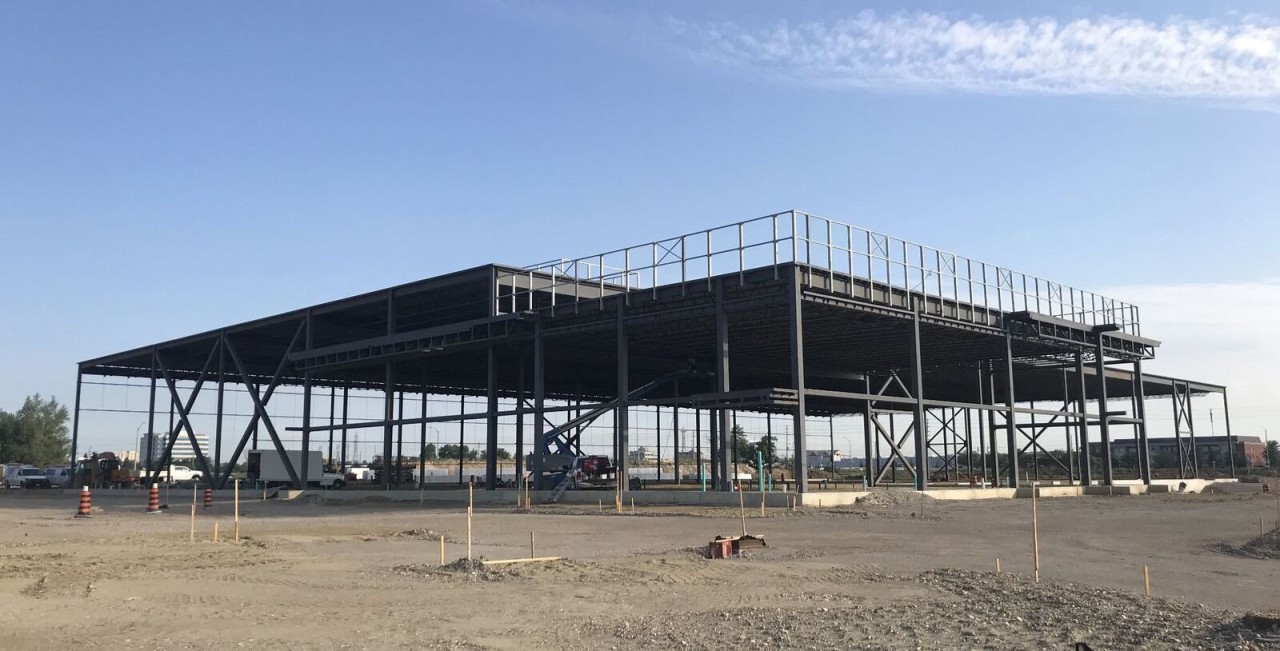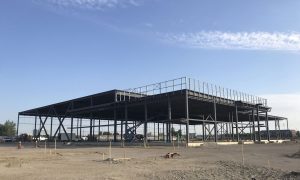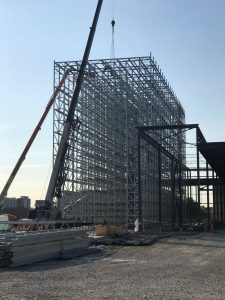
Creating Opportunity Where There Seemingly Is None…
Sometimes, on the surface, it just doesn’t make sense to invest.
Perhaps you will need to overpay. Perhaps you will need to wait longer than you would like. Or perhaps you will need to take on too much risk to get the deal done.
Yet when there are slim pickings; you can’t always get everything on your list of investment criteria. In addition, it may be better to be in play than sitting on the sidelines when there is no guarantee that the environment will change any time soon.
As such, the Greater Toronto Area Industrial Market remains hot, with:
- demand continually outpacing supply,
- vacancy rates at the lowest level in North America (and reducing further),
- rising net rental rates,
- land sites for development hard to find (unless you venture out to the burbs),
- land values skyrocketing, and
- investment products of any significance hard to find…
All of this while many institutional and private investors – small and large – are ready to deploy large sums of capital into industrial product.
So how can you find investment opportunities that make sense?
One of the few alternatives – and maybe the best option – is to develop from the ground up and create your own product. You could then pre-lease it prior to completion and enjoy a steady and increasing income for the next 10 to 15 years while benefiting from further appreciation in value.
Industrial Building under construction – Greater Toronto Area
Last week, we introduced a high-level view of the steps you would need to complete when developing an industrial site; with an example of a generic development site in the City of Toronto.
Specifically, we examined the Site Plan Application Process, and in more detail, the Planning Rationale Report that should be prepared and submitted with the application (if you missed that issue, check your email inbox or reply and we’ll send a copy over).
This week, we are going to take a closer look at the Site Plan Control Application process.
So, to summarize…
What is Site Plan Control?
Section 114 of the City of Toronto Act and Section 41 of the Planning Act grant the City the authority to include in its Official Plan areas to be designated as “areas of Site Plan Control.”
During this process, both the design and technical aspects of a proposed development are examined to ensure it is attractive and compatible with the surrounding area. Further, the development should contribute to the economic, social, and environmental vitality of the City.
Why Is a Site Plan Control Application Required?
When developing, you must confirm that your property receives Site Plan Control approval and that your proposal complies with the Zoning By-law (you should first apply for a Preliminary Project Review to determine this).
If it doesn’t comply with the Zoning By-Law in place, you may need to concurrently apply for a Zoning By-law Amendment or Minor Variance so that a review of all applications can be conducted together.
Procedure and Timelines
It is important to note that the approval authority for Site Plan Control applications lies with the Chief Planner. However, City Councillors retain the right to request that any individual application be reported to City Council for its decision.
When a complete application submission is received, the City will commit to STAR target timelines. Within 30 days of the submission and payment of the application fee, you will be advised in writing as to:
- the completeness or incompleteness of your application
- the assigned STAR stream and application file number
Depending on the nature and complexity of the application, a response should be received within:
- Three months – Quick
- Four months – Routine
- Nine months – Complex
Revision and Resubmission
You may be required to revise your proposal and provide additional documentation which all should be discussed, co-ordinated and submitted to the Planner within three to six weeks.
Community Consultation Meeting
Even though it is not required by the Planning Act, at the discretion of the Chief Planner staff a meeting may be held with the local community concerning the Site Plan Control application. It is usually attended by the Ward Councillor.
The meeting provides staff an opportunity to outline the planning process to the local community, an opportunity to the applicant to publicly present the proposal, as well as an opportunity for the local community to provide comments. All of this is taken into account by City staff when discussing revisions to the proposal.
Recirculation, Consultation, Further Revisions and Finalization of Application
This involves:
- Recirculating your revised proposal to the City Divisions that will further review all the changes;
- Conducting discussions over new material and technical matters;
- Conducting further consultations with the Ward Councillor or the local community;
- Undertaking subsequent resubmissions and recirculations arising from these considerations.
Repeat all of the above until your application is finalized.
Notice of Approval Conditions
Chief Planner has the approval authority for Site Plan Control applications.
The City of Toronto has a two-stage approval process for Site Plans. The first stage is the issuance of the Notice of Approval Conditions (the “NOAC”) and the second stage, once all pre-approval conditions have been met, the issuance of the Statement of Approval which signifies final site plan approval.
The Director of Community Planning will issue the NOAC, recommending approval subject to a list of pre-approval and post-approval conditions. Pre-approval conditions must be met, one of which is entering into the Site Plan Agreement which secures the post-approval conditions.
In the event that the City refuses the application, or if any of the conditions of approval are not acceptable, an appeal may be presented to the Local Planning Approval Tribunal.
If a “Bump-Up” is Requested by the Ward Councillor
In order to provide an opportunity for consultation with the local community, the Ward Councillor may request that any application be “bumped-up” for a report to City Council. In this case, the community consultation meeting is organized with attendance of the City Planning staff and chaired by the Ward Councillor.
Statement of Final Site Plan Approval
Once the pre-approval conditions set out in the Notice of Approval Conditions have been satisfied and the Site Plan Agreement has been entered into and registered on title, the Director of Community Planning will grant final approval of your application by issuing a Statement of Approval.
Industrial Building under construction – Greater Toronto Area
Furthermore….
In addition to the Planning Rationale, together with:
Application Form
https://www.toronto.ca/wp-content/uploads/2019/01/9456-8b70-Development-Approval-Application.pdf,
Application Checklist
Project Data Sheet
…A number of other reports will have to be prepared and submitted together with the Site Plan Application.
Those reports are:
- Transportation Impact Study
- Traffic Operations Assessment
- Truck Movement
- Arborist/Tree Preservation Form and/or Declaration
- Boundary Survey
- Topographic Survey
- Toronto Green Standard Checklist
- Storm Water Management Report
- Servicing Report
- Geotechnical Report
- Architectural Plans
- Civil and Utilities Plans
- Landscape and Lighting Plans
- Environmental Impact Study
- Concept Site Plan
And of course, there are fees that go along with the process…
Fees
Effective January 1, 2019, (Note: fees are adjusted every January 1).
For a complete list of fees please follow the link below:
https://www.toronto.ca/city-government/planning-development/application-forms-fees/fees/
Conclusion:
The Greater Toronto Area Industrial Market is one of the “tightest” markets in North America with vacancy rates for small- and mid-size-bay product starting at 0.2% and going up to about 1.4 % for larger facilities.
The market is largely being driven by e-commerce and a continuous increase in online retail sales.
Institutional and private investors looking for product are out of luck, and since they can’t find it they are forced to create it through development.
Large warehouse and distribution properties are being constructed further out in “the field” – meaning the fringes and periphery – where larger land sites are available. Millions of square feet are being pre-leased to e-commerce companies.
Infill sites are becoming extremely important as a solution for the “last mile” problem in the supply chain. Because of this, we will see more and more of this kind of redevelopment within the City of Toronto. Obviously, however, this activity is limited to if and where such industrial land sites suitable for redevelopment can be found; and with close proximity to greater population density. These sites are becoming more and more valuable, and the pricing per acre keeps on increasing at a quick pace.
Smart developers and investors have realized that few have been paying attention to the small- and mid-size-bay product. Hence, they have started converting existing multi-tenant industrial buildings to condominiums, as well as building from the ground up.
Overall, I hope you can get a sense of the frame of mind investors are taking to deal with the changing market landscape. We live in a world full of abundant opportunity, yet it is not always so directly attainable due to competition and the forces of economics.
If you have been considering employing a creative strategy or solution towards investing, selling, or developing industrial real estate, then give us a call. Our team of experts can supply an additional perspective, as well as guidance and market intel from the street level.
Until next week….
Goran Brelih and his team have been servicing Investors and Occupiers of Industrial properties in Toronto Central and Toronto North markets for the past 25 years.
Goran Brelih is a Senior Vice President for Cushman & Wakefield ULC in the Greater Toronto Area.
Over the past 27 years, he has been involved in the lease or sale of approximately 25.7 million square feet of industrial space, valued in excess of $1.6 billion dollars while averaging between 40 and 50 transactions per year and achieving the highest level of sales, from the President’s Round Table to Top Ten in GTA and the National Top Ten.
Goran is currently serving as Immediate Past President of the SIOR ‐ Society of Industrial and Office Realtors, Central Canadian Chapter and on the Board of Directors of Muki Baum Accessibility Centre, a Toronto‐based NGO which provides support to children and adults with complex disabilities.
Specialties:
Industrial Real Estate Sales and Leasing, Investment Sales, Design-Build and Land Development
About Cushman & Wakefield ULC.
Cushman & Wakefield is a leading global real estate services firm that delivers exceptional value by putting ideas into action for real estate occupiers and owners. Cushman & Wakefield is among the largest real estate services firms with 48,000 employees in approximately 400 offices and 70 countries.
In 2017, the firm had revenue of $6.9 billion across core services of property, facilities and project management, leasing, capital markets, advisory, and other services. To learn more, visit www.cushmanwakefield.com or follow @CushWake on Twitter.
For more information on GTA Industrial Real Estate Market or to discuss how they can assist you with your real estate needs please contact Goran at 416-756-5456, email at goran.brelih@cushwake.com, or visit www.goranbrelih.com.





